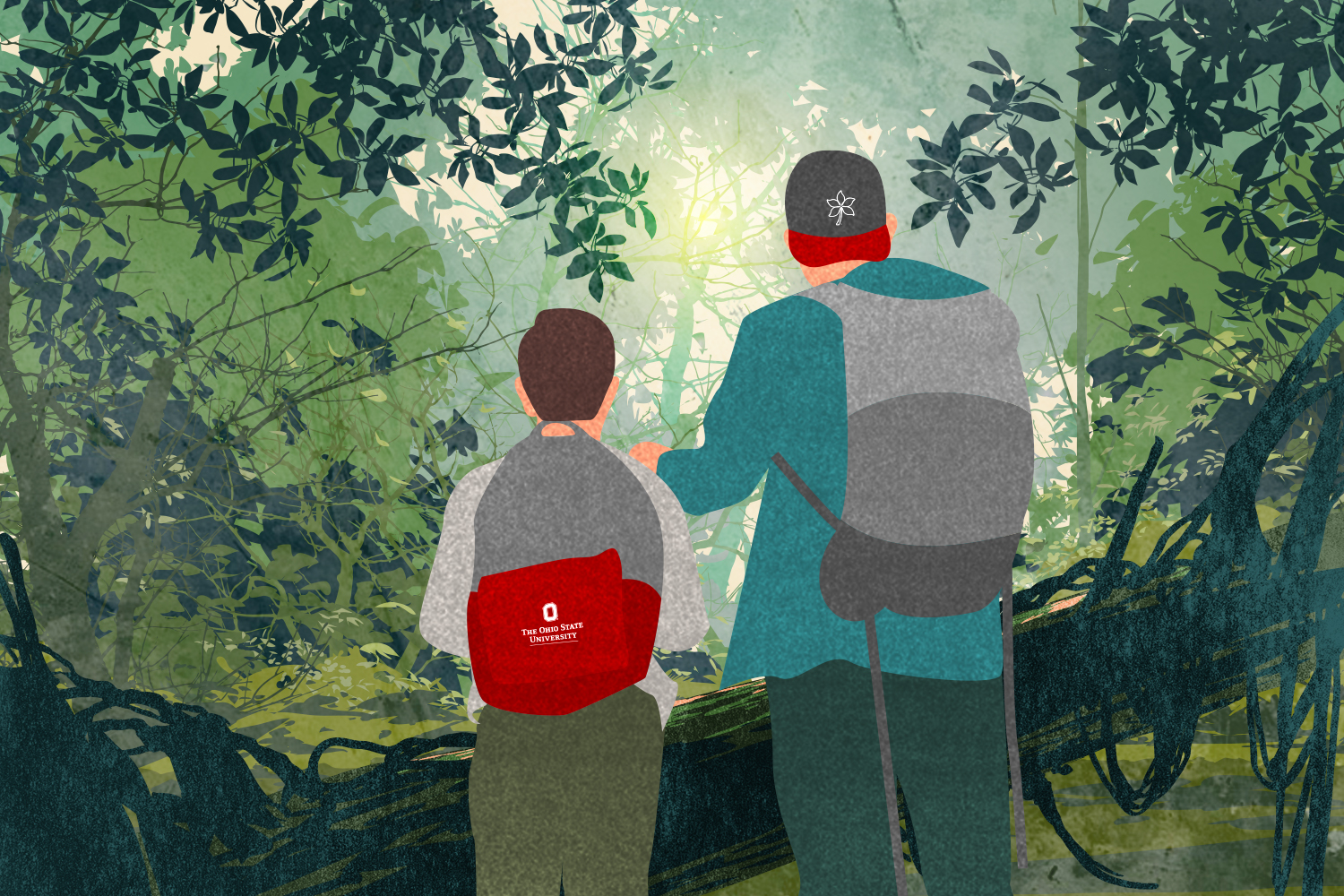Out and about? So are ticks.

Ah summer… Gardening, hiking, swimming outdoors until dark and possibly an unwanted brush with a tick.
Getting bitten could bring just an innocuous red spot or Lyme disease — and there’s a lot of variation in between.
Risa Pesapane thrives on talking about, plucking out and poring over ticks. The researcher tweets: “Ohioans, send me your ticks,” a plea accompanied by a picture of eight-legged parasites floating on their backs in a plastic bag of water.
What’s to like about ticks? Not much unless you study wildlife and diseases pests pass on, as Pesapane does. With reports of tick bites and Lyme disease on the rise for people and pets in Ohio and across the country, it’s Pesapane’s mission to figure out ways to slow the uptick.
Ticks don’t jump. They don’t fall out of trees. They only crawl — and slowly. About 10 feet is the farthest most will go for a meal, Pesapane said.
And to get that meal, they can be devious. Their saliva helps them feed undetected — sometimes for days.
“That’s often why people say: ‘I had no idea the tick was there,’” Pesapane said.
Tick saliva contains substances that can numb and others that can stop blood from clotting, so they can suck blood out easily.
If you remove a tick within a day or two, even an infected tick may not have had the chance to pass on any pathogens. Still, the faster you pluck out the tick, the better. They can stay for as many as seven days furiously feeding on a person or animal. Every meal counts: They have only three in their entire two-year life.
“They go a very long time after each meal,” Pesapane said.
And ticks are most active during the warmest months like many of us. So, as you savor the outdoors, keep your eyes out for these four ticks, which are the most threatening to people and pets in Ohio: the blacklegged tick; the lone star tick; the American dog tick; and the state’s newest tick, the Gulf Coast tick.
When you’re in and around ticks’ favorite hangouts — wooded areas, tall grass fields, under piles of wood or decomposing leaves — it pays to check yourself and your pets for the crawling creatures that might otherwise go unnoticed.